
Hydromassage Guide




Our Hydromassage guide is based on our 2012 Shape of Wellbeing scientific communication project and has been consolidated and adapted to create a user-focused guide. This guide aims to help people understand hydromassage, its benefits, how to approach hydromassage, and the essential elements required for a good hydromassage experience. By integrating insights from scientific research, user feedback and 65 years of experience from Jacuzzi®, we provide a comprehensive resource that empowers users to make informed decisions about their health and wellness.
Copyright© 2024 Jacuzzi ®
All rights reserved.
Reproduction and disclosure, as well partial, is prohibited without the authorization of Jacuzzi ® This document does not provide medical advice. It is intended for informational purposes only. It is not a substitute for professional medical advice, diagnosis or treatment.
*(† 1st July 2024)
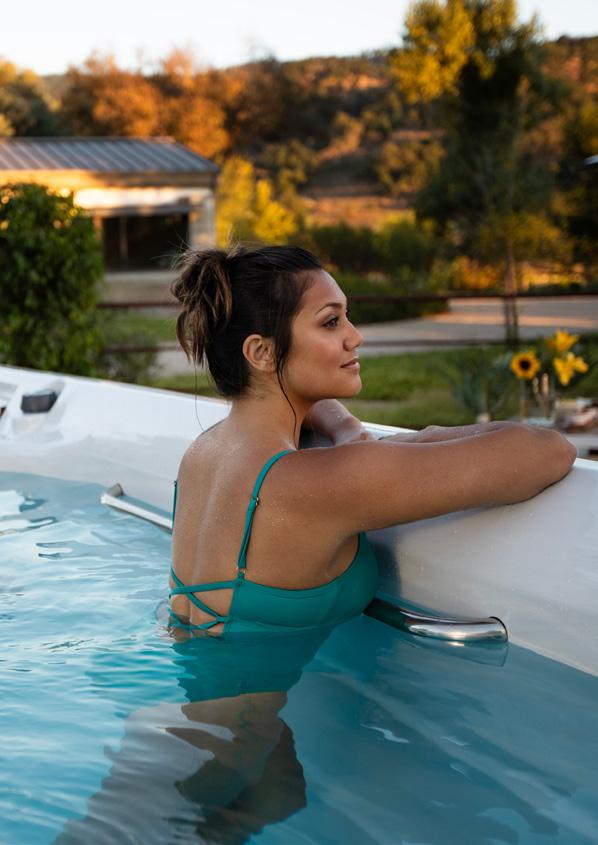

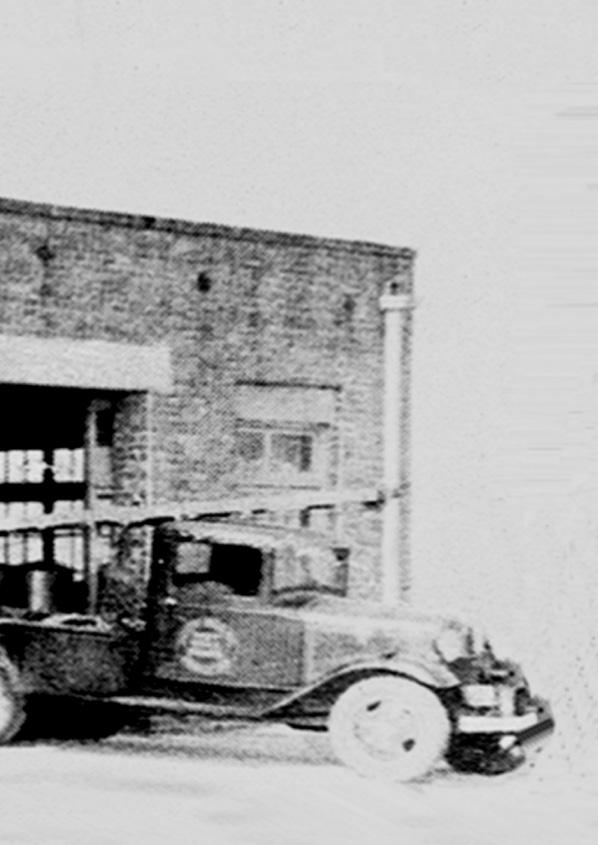
The Constitution of the World Health Organization (WHO), defines health as “a state of total wellbeing, encompassing physical, mental and social aspects, and not simply the absence of illness or infirmity”.
The inclusion of the concept of wellbeing in the definition of health reflects the increasing interest in the evolution of public health beyond treatment, in the narrowest sense, towards all the possible options that could lead to personal wellbeing.
Daily stress, stemming from a hectic life, unavoidably leads individuals to search for inner peace. It can be affirmed that whoever wants to improve the quality of their life, must be at peace with themself and with the world around them. Numerous studies have demonstrated that physical activity helps to improve one’s mental state, reducing stress.
When one’s muscles are under tension, the body produces substances which trigger wellness processes, both from a physical and mental point of view.
Soaking in hot water is a great way to take care of ourselves and improve our mental and physical health. It is one of the oldest practices humans have used to relax and feel better. However, for this to be truly beneficial, it needs to follow some general guidelines. These include considerations like how long you stay in the water, the temperature, the type of water used (such as spring water or regular water), and how the bath is taken. A true technique exists, called balneotherapy, offering considerable possibilities including hydromassage, i.e. massage effected by jets of water emitted at certain pressures.
Since the time of the Greek physician Hippocrates, known as the father of medicine, through the Roman era and the Middle Ages to today, water has always been used for its healing properties. Livio, writing about ancient Rome, called water “the most humble element.” Water has been used both as a drink and in baths to relieve and cure various illnesses, especially chronic ones like skin and soft tissue diseases, digestive issues, rheumatism, indigestion, and liver disorders.



Hydromassage is defined as an “external crenotherapeutic” therapy (i.e. a cure which puts the body into contact with a substance utilised for the therapy, in this case water). Hydromassage is carried out with special jets of water issued at defined pressures.
The jets are orientated in a centripetal direction, i.e. from the sole of the foot to the chest, to promote the circulation of the return blood.
The therapy lasts around fifteen minutes, after which the bather is left to rest for another fifteen minutes.
In therapeutic terms, this centrality of jets of water explains why their orientation is one of the basics of hydromassage according to Jacuzzi®.
Whirlpool baths, together with Hot Tubs, are indeed designed with particular attention to jet positioning, which must not be casual, but studied specifically together with the internal ergonomics of body shapes, to optimise the effects of the hydrotherapeutic action (feet jets, thigh jets, dorsal jets).
Through careful research, the design of a hot tub or bath is also a fundamental element for good hydromassage. Jacuzzi® hydromassage has been designed to create the correct immersion of the body and better water circulation.

Hydromassage is highly effective for treating conditions related to blood circulation, problems in the legs, such as varicose veins, post-saphenectomy outcomes, and post-phlebitic syndromes. It also benefits those with osteoarthritis, chronic extra-articular inflammatory rheumatism, trauma or surgery recovery, and edema.
Hydromassage baths are also valuable for treating chronic rheumatism, fibromyalgia, chronic bronchitis, nephritis, menstrual pains, gastric and intestinal disorders, and as a palliative measure for gallstones and kidney stones.
The therapeutic properties of hot water in whirlpool baths and hot tubs are beneficial for any body type, size, and stress level. These baths can accommodate multiple people, catering to different needs. Some people need a vigorous jet to loosen muscle knots, while others need soothing hot water to refresh their minds and relax their bodies.
Therefore, a whirlpool bath or hot tub must offer jets of the right size and intensity for each muscle group. All TargetPro® and PowerPro® jets in Jacuzzi® Whirlpool baths and Hot Tubs are designed to precisely direct the water flow. The water pressure can be adjusted from one seat to another, and the hydromassage jets can be independently turned on or off in each seat.
These jets also have an external and internal movement, while the rotating water jets mimic the circular motion of rubbing the hand over specific points on the body.


Bathing therapy, particularly hydromassage, encompasses a range of physical and chemical actions that contribute to its therapeutic benefits. Here are some additional physical and chemical actions:
1. Temperature Regulation:
• Warm water immersion1 helps to relax muscles, reduce muscle spasms, and alleviate joint pain by improving blood flow and decreasing stiffness.
• Cold water immersion2 can reduce inflammation and numb areas of pain, aiding in recovery after intense physical activity.
2. Buoyancy and Weightlessness:
• The buoyant force of water reduces the effective weight of the body, relieving stress on joints and muscles. This makes movements easier and less painful, particularly beneficial for individuals with arthritis or injuries.
3. Hydrostatic Pressure3:
• The pressure exerted by water on the body enhances venous return, helping to reduce swelling and improve cardiovascular function. This pressure can also assist in lymphatic drainage, which aids in detoxification.
4. Muscle Relaxation and Stretching4:
• Water resistance provides a gentle and uniform resistance, making it an excellent medium for low-impact strength training and flexibility exercises. It supports muscle relaxation and stretching, improving overall muscle tone and flexibility.
5. Stress Reduction5:
• The soothing properties of water, combined with the rhythmic movement of hydromassage, can significantly reduce stress and anxiety, promoting mental well-being and relaxation.
1. Mineral Absorption1:
• Bathing in mineral-rich waters, such as those found in natural hot springs, allows the skin to absorb beneficial minerals like magnesium, calcium, and potassium. These minerals can enhance skin health, reduce inflammation, and support overall well-being.
2. Detoxification2:
• Warm water baths encourage sweating, which helps in the elimination of toxins from the body. The increased blood flow also aids in flushing out metabolic waste products from tissues.
3. Skin Health3:
• Regular exposure to water and certain bath additives, such as salts, can improve skin hydration, texture, and elasticity. This can alleviate conditions like eczema and psoriasis.
4. Enhanced Immune Function4:
• Alternating between hot and cold water baths can stimulate the immune system by enhancing blood circulation and promoting the activity of white blood cells. This process, known as contrast hydrotherapy, can help the body fight off infections more effectively.
5. Pain Relief5:
• The analgesic effects of warm water immersion can help reduce the perception of pain. This is particularly useful for individuals with chronic pain conditions, as the heat and hydrostatic pressure can help block pain signals to the brain.
1 Clinical, Cosmetic, and Investigational Dermatology 2 Integrative Medicine: A Clinician’s Journal
3 https://pubmed.ncbi.nlm.nih.gov/?term=Hydrotherapy+skin+health 4 The American Journal of Medicine* and immunology-related publications
5 https://pubmed.ncbi.nlm.nih.gov/?term=Analgesic+effects+of+hydrotherapy
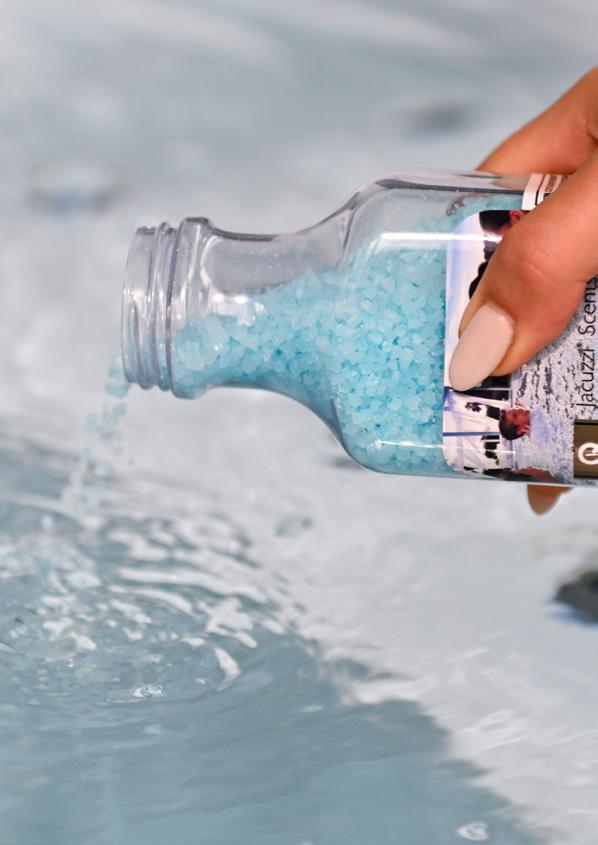
Advice:
In specialised therapeutic centres, naturally mineralised waters are often used or those which are artificially medicated (with the addition of aromatherapy salts and oils) at variable temperatures and pressures.
Combining aromatherapy with hydromassage is especially beneficial. The pleasant sensation from the contact between skin and air bubbles can be enhanced with fragrances designed to dissolve in the water. A bath with these essences should last 20-25 minutes. Due to the nature of the oils, it’s recommended to limit sessions to no more than twice a week.
Some salts in high concentrations can damage hot tubs, make sure you use aromatherapy salts that are designed for the products they are being used in.

Hot baths and hydromassage stimulate the skin to increase lymphatic circulation, activating cells and antibodies that remove exudates from fibrous tissue, and stimulate antigens and enzyme activity.
According to the temperature used, the effects may be summarised as follows:
Skin:
• Moderate increase in skin temperature due to vasodilation.
• Increased activity of sweat and sebaceous glands.
Circulation:
• Moderate increase in water temperature relaxes the superficial vascular system.
Breathing:
• Higher temperatures generally facilitate easier breathing.
Muscles:
• A hot bath with hydromassage at 37°C:
• Decreases muscular excitability and working capacity.
• Very brief hot baths can revitalise muscles after intense stress.
Nervous system:
• Baths at 37°C initially have an exhilarating effect, followed by a depressive effect.
Blood:
• Reduces the number of red blood cells, possibly due to their retention in internal organs.
• This leads to a proportional reduction in hemoglobin levels.


A well-chosen hydromassage can provide therapeutic benefits, enhance relaxation, and improve overall quality of life. However, with various options available, it’s essential to consider several critical factors to ensure you get the most out of your purchase.
This section outlines the seven golden rules to help you choose a hydromassage system that meets your specific needs and delivers an unparalleled experience of comfort and luxury. From the positioning of jets to the innovative technology of Jacuzzi®, each section will guide you through the essential aspects of making an informed decision.

The placement and variety of jets are fundamental to an effective hydromassage experience. Strategically positioned jets target essential muscle groups, while different types of jets offer a range of massage techniques. Customisable configurations enable a tailored experience, ensuring optimal therapeutic benefits.
a. Strategic Jet Placement
Strategic placement of jets is essential for a comprehensive hydromassage experience. Jets should be positioned to target key muscle groups such as the back, shoulders, and legs, providing effective relief and relaxation. Placement should also cover areas like the neck, calves, and feet for a full-body massage.
b. Variety of Jet Types
Different jets offer various massage techniques. For example, rotational jets mimic a kneading effect, which is great for deep tissue massage, while directional jets provide targeted pressure, ideal for specific pain points. Other types include pulsating jets for rhythmic massage and wide-stream jets for broader coverage.
c. Customisable Configurations
Some advanced systems allow for customisable jet configurations, enabling users to tailor the massage experience according to their specific needs and preferences. This flexibility can significantly enhance the therapeutic benefits by focusing on areas that require more attention.
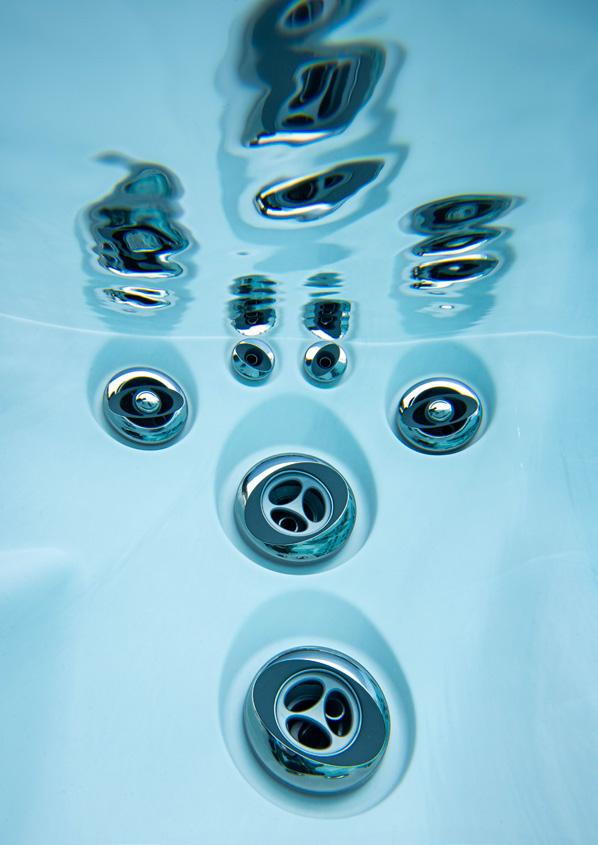

By integrating insights from scientific research, user feedback and 65 years of experience from Jacuzzi®, we provide a comprehensive resource that empowers you to make informed decisions about your health and wellness.
a. Adjustable Flow Controls
Having adjustable controls for water flow allows users to regulate the intensity of the massage. This feature is crucial for tailoring the massage to individual comfort levels, providing both gentle relaxation and more intense therapeutic massages as needed.
b. High-Precision Flow Regulators
High-end models often come with precision flow regulators, providing smooth transitions and consistent pressure, enhancing the overall massage experience. These regulators ensure that the flow is not too strong or too weak, maintaining a balanced and comfortable hydromassage.
c. User-Friendly Interface
A user-friendly interface for controlling the flow rate makes it easy for users to adjust settings without interrupting their relaxation. Digital touch controls and intuitive designs can significantly improve the usability of the hydromassage system.

The ability to direct jets enhances the specificity and effectiveness of the massage. Adjustable nozzles and personalised targeting allow users to focus on sore or stiff areas, maximising therapeutic benefits and ensuring a customised and comfortable experience.
a. Adjustable Jet Nozzles
Jets with adjustable nozzles allow users to direct the water flow to specific areas that need more attention, such as sore muscles or stiff joints. This feature ensures that the massage is both effective and targeted, providing relief where it is needed most.
b. Personalised Targeting
The ability to personalise the direction of the jets ensures that each user can achieve the most effective and comfortable massage experience. This customisation is particularly beneficial for addressing individual health concerns and preferences.
c. Therapeutic Benefits
Directable jets enhance the therapeutic benefits by allowing targeted massage, which can aid in recovery and relief from specific ailments. Targeted jets can help alleviate pain, reduce muscle tension, and improve overall wellbeing.
A balanced mix of water and air is essential for a smooth and soothing massage. Consistent pressure and advanced mixing technology provide a seamless and enjoyable experience, avoiding discomfort from excessive pressure or turbulence.
A balanced mix of water and air ensures that the massage is smooth and soothing. This balance is essential to avoid discomfort from too much pressure or turbulence. The right mix provides a gentle yet effective massage that enhances relaxation.
b. Consistent Pressure
Maintaining consistent pressure through a uniform water/air mix is vital for a relaxing experience. Inconsistent pressure can disrupt relaxation and reduce the effectiveness of the massage. Consistency ensures a seamless and enjoyable experience.
Advanced hydromassage systems utilise cutting-edge technology to maintain a perfect blend of water and air, providing a seamless and enjoyable massage. Technologies such as variable speed pumps and sophisticated air induction systems contribute to this balanced mix.
Water introduction through 1.5" pipe

360O Air introduction for optimal mix
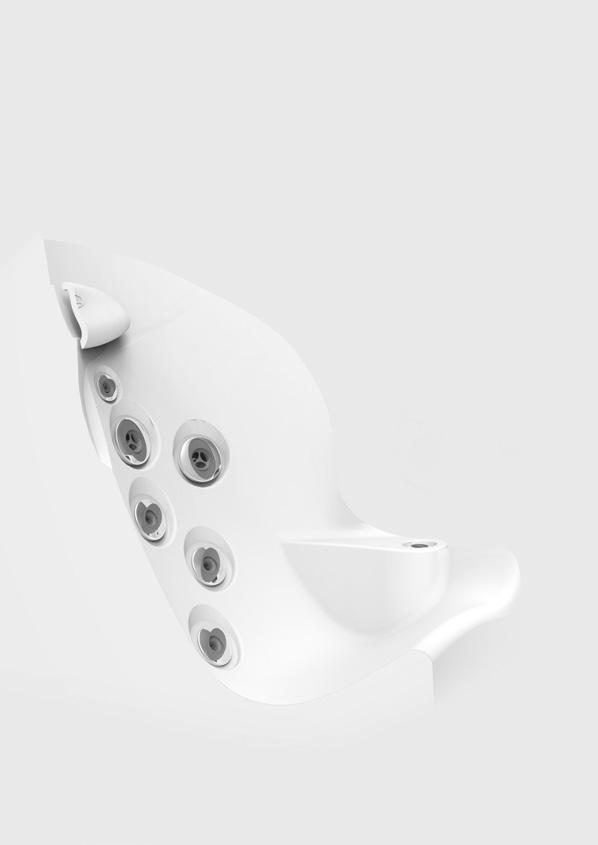
Depth Tilt Breadth Lumbar Support
Ergonomic design in the tub supports comfort and effective hydrotherapy. A spacious layout and additional comfort features like padded headrests ensure users can fully relax, enhancing the overall hydromassage experience and its therapeutic benefits.
a. Ergonomic Design
An ergonomically designed tub supports the body’s natural contours, ensuring comfort and effective hydrotherapy. Proper seating and positioning are critical for maintaining correct posture during the massage, which enhances the overall therapeutic benefits.
b. Spacious Layout
A spacious tub layout allows users to stretch and relax fully, enhancing the overall hydromassage experience. Adequate space ensures that users do not feel cramped or restricted, which can detract from the relaxation experience.
c. Comfort Enhancements
Additional comfort features, such as padded headrests and armrests, contribute to a more enjoyable and relaxing hydromassage session. These enhancements ensure that users can fully unwind and enjoy the therapeutic benefits of the tub.
Heat has a unique ability to relieve pain, likely due to its ability to increase blood flow (hyperemia), which improves vascular stasis (reduced blood flow speed). Some authors suggest heat may also inhibit sensory nerve pathways by affecting the skin’s thermal nerve endings.
Additionally, hot water can increase blood flow and help muscles relax. Water above body temperature (37°C) is considered hot; over 40°C is very hot, and above 46°C is unbearable for more than a few seconds. Initially, a hot bath with hydromassage can be euphoric but may become stressful for the body after a while.
As baths with hydromassage are mainly used to eliminate stress, it is essential to control water temperature in combination with the time spent bathing.
A general rule regarding bathing time vs. water temperature: The higher the temperature, the shorter the session must be, as suggested in the following table:
In order to accustom the body to heat, it is good practice to start with a bath no longer than 10 minutes. Once the body has adapted, bathers can then find their optimal duration which will be personalised based on the needs of each individual. Before hydromassage, it is advised to do a body scrub at least once a month to clean the skin and remove dead cells.

Technically, the ideal duration of a hydromassage varies between 15 to 20 minutes. The first effects are felt after 5 - 10 minutes: you will feel revitalised, less stressed, your muscles will be more toned, you will feel a general sense of improved wellbeing. Every hydromassage session can be personalised on the basis of bather need and preferences.

Jacuzzi® has over 65 years of experience which combines innovation, quality, and a focus on health and wellbeing to deliver a superior hydromassage experience. Advanced technology, such as the SmartTub® system, and high-quality materials ensure long-lasting performance, while ergonomic design and hydromassage techniques promote overall health
Jacuzzi® is renowned for its innovative approach and use of cutting-edge technology in our hot tubs. Features like the SmartTub® system allow for remote monitoring and control, providing unmatched convenience and user experience. This technology enhances energy efficiency, with Jacuzzi® hot tubs performing 22% better than the globally recognised Californian energy commission standards. Additionally, Jacuzzi® holds over 700 global patents, underscoring its position as the most innovative spa and swim spa brand ever.
Jacuzzi® hot tubs are built on a foundation of quality and reliability. Our brand’s commitment to using high-quality materials and rigorous testing ensures long-lasting performance and customer satisfaction. Each Jacuzzi® product is designed to provide years of reliable service with minimal maintenance. Supported by an industry-leading warranty and lifetime support, Jacuzzi® demonstrates its confidence in product durability and offers an extensive support network with 35 retail showrooms across the UK, some with partners who have been in business for over 40 years.
The Jacuzzi® experience is designed to improve both physical and mental wellbeing. The combination of hydromassage, ergonomic design, and advanced features promotes relaxation, recovery, and overall health. Jacuzzi® hydromassage employs strategically placed jets that provide targeted therapeutic benefits, helping to alleviate muscle tension, improve circulation, and reduce chronic pain. Regular use of a Jacuzzi® hot tub can lead to improved sleep, reduced stress, and enhanced physical recovery. The ergonomic design of Jacuzzi® hot tubs ensures optimal body positioning, enhancing the effectiveness of the hydromassage. The jets are designed to target specific muscle groups, delivering a deep and soothing massage that promotes muscle relaxation and recovery.


Many high-level sports clubs have suggested fatigue reduction to their athletes with a hydrotherapy session. This practice seems effective at the end of a heavy training session and at the end of matches, in order to accelerate full muscle recovery.
The reason is that water has physical properties, making it a valuable tool for applying thermal stimuli to the body.
With appropriate water jets that have been suitably modelled to meet the morphology of the human being, it is possible to exert a series of calibrated pressures on the skin to promote the movement of cutaneous and subcutaneous liquids from the peripheral area to the centre of the body.
In this way, the accumulation of liquids, which occurs under the skin and especially in muscle at the end of heavy exercise can be disposed of more quickly, thereby helping the athlete to recover.
This possibility is a hypothesis, not yet proven using experiments, but it would also apply to lactic acid which accumulates in the muscle immediately after intense exercise.
For the same reasons, also not yet demonstrated on a scientific basis, but with subjective benefits, alternated hot and cold baths are also used. The logic is that alternating cutaneous and muscular vasodilation (hot baths) with vasoconstriction (cold baths) leads to a removal of blood from skin and muscle (the outer layer) towards the deeper parts of the body (central nucleus). There is a supposed quicker removal of metabolic products from the muscle towards other tissues responsible for their disposal (other muscles, liver, etc.).
At the end of a busy day, immersion into hot water for a few minutes, gives a great mental-physical benefit to everyone, independently from practicing sport or training, owing to the well-known and particular relaxing effects of hot water (around 34°C - 37°C), encouraging, amongst other things, sleep.

When the bath is of the “deep” immersion type, the water, owing to its physical characteristics, supports the limbs and permits movements which could otherwise not be carried out.
This result is particularly valuable in arthro-muscle stiffening and in a few forms of arthritis.
Exercises in a hydromassage bath can be an important treatment for many patients with neurological or skeletal muscle pain. The heat, together with the hydrostatic pressure of the water, can block nociceptive pain, by acting on thermal and mechanoreceptors, thereby influencing the mechanisms of spinal signaling.
Hydrostatic pressure can relieve pain, reducing peripheral oedema, dampening the activity of the sympathetic nervous system.
Bathing in water, without exercise, has often been used in alternative medicine as a cure for chronic disease. It is a very common form for the treatment of all types of arthritis in many European countries, as also in Israel and Japan.


The whirlpool bath or hot tub can be the perfect place for simple exercises. It’s a beneficial and enjoyable experience, another way to show love and respect for your body. Give our suggestions a try: the water makes every movement easier.
Legs: immerse yourselves completely into the Whirlpool bath or into the Hot Tub, leaning against the back rest, lift a leg, bend it and bring the knee slowly towards your body, stretch the leg and repeat the exercise three times, first with one leg and then with the other. You can carry this out up until five consecutive times.
Abdominals: immerse yourselves completely into Whirlpool bath or into the Hot Tub, leaning against the back rest, breathe in deeply, and while you breathe out, softly contract the abdominal muscles. Do this exercise calmly, trying to do a series of five exercises. You can gradually increase up to ten consecutive exercises.
Shoulders and neck: immerse yourselves completely into Whirlpool bath or into the Hot Tub, leaning against the back rest. Ensure that your shoulders are immersed. With a circular movement, slowly rotate the shoulders forwards and backwards for five times. After a brief pause, complete three complete exercises. You can gradually increase up to ten consecutive exercises. In the same position and maintaining the shoulders immersed, delicately and slowly move your head from one side to the other, working on your neck muscles.
Relaxation: after having completed the exercises, put yourselves in a sitting position, close your eyes and slowly do a few complete breathing cycles (inhalation and exhalation).
After a hydromassage session, wrap yourself in a dry bathrobe or towel, and lie down and relax for a few minutes: in this way you will encourage sweating and at the same time you will allow your blood pressure to return to normal level.

To provide a comprehensive understanding of hydromassage, it is essential to address not only its benefits but also the potential contradictions associated with its use. The following section outlines the contraindications and scenarios where hydromassage might not be advisable, ensuring a balanced view that helps users make informed decisions about their health and wellness.
• Hydromassage is not recommended for individuals with malignant tumors, during pregnancy and breastfeeding, or during acute stages of other pathologies.
• It is advised against during tuberculosis in the exudative stage, acute respiratory failure, and severe chronic respiratory failure.
• Dermatological conditions such as blisters and pustular forms should also avoid hydromassage.
• From a cardiocirculatory perspective, hydromassage is contraindicated in cases of thrombophlebitis, severe hypertension, or ischemic heart disease.
• Hydromassage can induce thermal stress due to high water temperatures, affecting the cardiocirculatory and respiratory systems.
• In the presence of any health conditions or concerns, it is advisable to consult with a doctor before using hydromassage facilities.


Balneotherapy
Centripetal direction
Chronic
Crenotherapeutic
Ergonomics
Euphoric
Exudates
Fibromyalgia
Hemoglobin
Hydrostatic pressure
Hyperemia
Hypothesis
Inflammatory
Ischemic heart disease
Lymphatic circulation
A therapeutic treatment involving bathing in mineral springs or other naturally occurring sources of water.
Movement directed toward the center; in this context, the jets of water are aimed from the feet toward the chest.
Long-lasting and persistent, typically referring to diseases or medical conditions that last for a long time or are constantly recurring.
Pertaining to the use of mineral springs or waters for therapeutic purposes.
The study of designing equipment and devices that fit the human body, its movements, and its cognitive abilities.
A feeling of great happiness or well-being.
Fluids, cells, or other substances that have seeped out of blood vessels or an organ, especially in inflammation.
A chronic condition characterised by widespread musculoskeletal pain, fatigue, and tenderness in localised areas.
A protein in red blood cells that carries oxygen from the lungs to the rest of the body.
The pressure exerted by a fluid due to its weight, often used to describe the pressure of water in therapeutic settings.
An excess of blood in the vessels supplying an organ or other part of the body.
A proposed explanation for a phenomenon, made as a starting point for further investigation.
Pertaining to inflammation, which is the body’s response to injury or infection, often causing redness, heat, swelling, and pain.
A condition characterised by reduced blood flow to the heart, often leading to chest pain (angina) or heart attack.
The movement of lymph, a fluid containing infection-fighting white blood cells, throughout the body.
Nociceptive pain
Pathologies
Peripheral circulation
Rheumatism
Saphenectomy
Sebaceous glands
Subcutaneous
Thermal nerve endings
Therapeutic
Vascular stasis
Vasodilation
Vasoconstriction
Whirlpool bath
Pain caused by damage to body tissue, often resulting from physical injury.
The science of the causes and effects of diseases; also refers to the diseases themselves.
Blood circulation to the outer areas of the body, such as the limbs.
Any disease marked by inflammation and pain in the joints, muscles, or fibrous tissue.
Surgical removal of a saphenous vein, often done to treat varicose veins.
Small glands in the skin that secrete an oily substance called sebum.
Situated or applied under the skin.
Sensory nerve endings in the skin that respond to changes in temperature.
Relating to the healing of disease.
The slowing or stopping of blood flow in the blood vessels.
The widening of blood vessels, which decreases blood pressure.
The narrowing of blood vessels, which increases blood pressure.
A bath in which water is heated and kept in motion by jets, providing massage and therapeutic benefits.